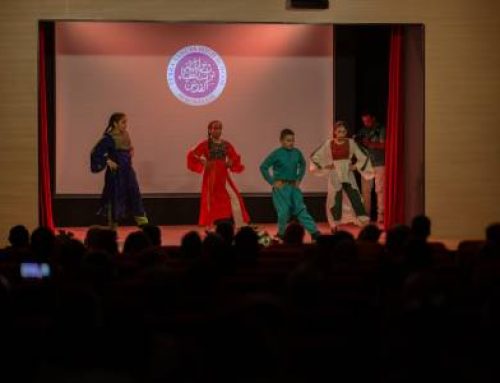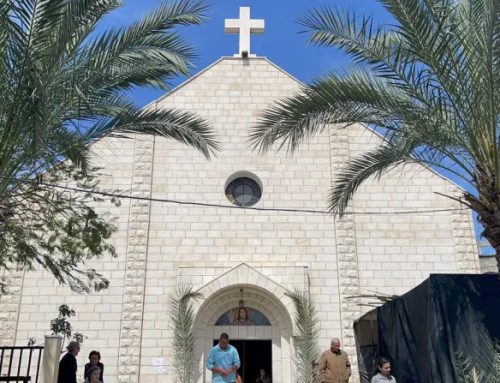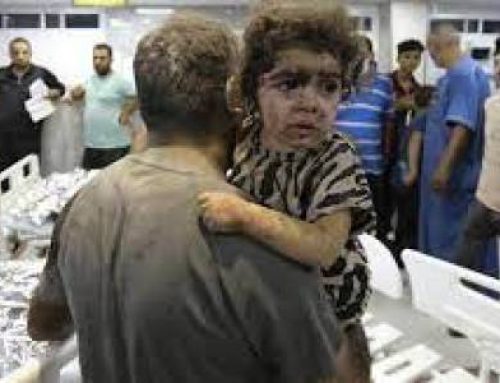The streets of Bethany meander dustily up the slope of the Mount of Olives. The traffic, always congested and noisy, travels slowly night and day, under the watchful eye of the minarets and the huge apartment blocks that dot the city.
Here, at a bend in the main road, half-hidden in the silent green of a flowering garden, stands the church that commemorates the place where the family of Martha, Mary and Lazarus, the friends to whom Jesus used to go, lived. On Monday, at the altar of the elegant Basilica, father Custos Francesco Patton blessed two jars of nard perfume, in memory of the anointing of the Lord by Mary, which according to the evangelist John happened on this very spot.
A unique liturgical occasion, indeed, attended by pilgrims from all over the world, bringing with them a joy that pours through Bethany and spreads like the perfume of spikenard. But, to tell the truth, there is already a scent of this perfume in Bethany.
You can catch it if you turn off the main road and wander down one of the narrow streets that wind like white roots through the slopes of the Mount of Olives. After a few metres between narrow lime walls, you come to a small shady square; an olive tree in the centre, rustling in the wind. Behind it, a cracked wooden door, turned against the sun.
The door opens, we find ourselves in the Mosaic Centre of Bethany. Odna welcomes us, some thirty years, a beaming smile under the pink veil, a pair of jeans and a pair of sneakers that give her a girlish air. In the centre, she says, we produce candles and soaps, and she is the project’s coordinator.
Local products
Leading us through a sunny and windy courtyard, where a woman hangs clothes while singing, Odna takes us into the Mosaic Centre. The sweet smell of spikenard is very intense and mingles with the scent of a thousand other flowers, such as vanilla and Rhud, a local plant.
These fragrances, here, are local products. And Odna in fact, turning around, states that “here at the Mosaic Centre everything is made from raw materials from Bethany or the surrounding area. We have too many souvenir shops here in Bethany selling things that are not made in the Holy Land. That is why we do everything locally, including the production and packaging”.
On messy tables, there are moulds into which the scented wax for the candles will be poured. Sitting next to the mis Sarah, 20 years old, who is beautifully drawing faces and embroidered flowers. “These are drawings for a new project we would like to launch at the Mosaic Centre,” Odna explains with a smile. “We would like to tell the story of Lazarus and his family on candles: their encounters with Jesus, the resurrection, the anointing by Mary…”.
The veil waved over her head as she spoke, hiding her eyes a little: “We are all Muslim women here, of course; but in Bethany, Christians and Muslims are like one big family. The story of Lazarus is also fascinating for all of us. And we like to tell it with candles, which is what we’re good at doing. In the new project we want to launch, we will sprinkle the candles with Bethany earth. It will compose a drawing taken from the story of Lazarus. Sarah will do the drawing”. Odna looks at her, and looks attentively at her work: “she’s very good, isn’t she?”.
The funding for the project
In order to raise the necessary funds for the new project on the story of Lazarus, approval is required in the framework of a competition promoted by the Ministry of Tourism of the Palestinian Authority. Odna tells us that that the Mosaic Centre is already writing the data sheets and making 100 prototypes to be shown at the evaluation. “We will need a month of work, two weeks for design and production, one week for finishing with Bethany earth, and one week for packaging. Everything has to be perfect,” she says, putting the moulds back on the tables.
“Here at the Mosaic Centre I always find myself enthusiastic about the initiatives we do; my job is in the municipality, as assistant to the mayor. But it is here where I like to be, even if I am a volunteer. And indeed, especially for this reason. Here I take care of the administrative side, and I try to include as many women as I can at any level of production. Even if it’s not always easy. We contacted thirty of them, thanks to the advice given to us by Pro Terra Sancta on how to listen to the needs of the people in the houses. But only four remained”.
For Odna, however, this is just one more reason to go ahead: “We already have a list with thirty more names of women and girls in need. We will give them training in how to extract fragrances from local plants to make candles and soaps”! Next to her Farwa, in her seventies, a wrinkled, cheerful face framed by a wide dark veil. “She is the teacher; she has been making candles since she was young, and she decided to teach this art to other girls in Bethany, to offer them an employment”.
“Now I know what I am looking at”
Odna comes out of the Mosaic Centre, into the great sun and wind that caresses Bethany with dust. She takes us to the church of Lazarus, and there, with his eyes upward, she begins to comment and describe the mosaics and paintings that tell of Jesus’ life in Bethany. “I was able to study all these things thanks to Pro Terra Sancta. I have been here thirty years in Bethany, and I knew almost nothing about what I was seeing; no one had ever told me. Now I know what I am looking at, I know this church and its history. . Next year I will go to Rome for a few months to complete my studies”, she adds as we climb the stairs leading out of the Christian complex.
A little further up, a mosque commemorates the story of al-Azaryeh, a righteous man whom Allah raised from the dead, according to Muslims, along with his donkey. “You see,” says Odna, “here we really are like one big family, all huddled around the story that is the most important to us: that of God’s love for the human being.”
Come and discover the products of our women in Palestine; we are waiting for you in Bethany!
/www.proterrasancta.org/






